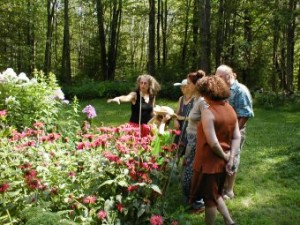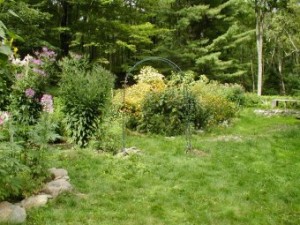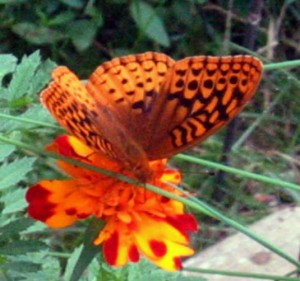
A butterfly/pollinator garden should have a few basic elements: it should provide host plants for native pollinators, a variety of nectar sources throughout the seasons, and shelter from the storms. Of course, do not use pesticides or herbicides.
Here is a partial list of butterfly host and nectar perennial flowering plants for the Northeast gardens with a few nectar attracting annuals marked A: (Regional resources listed below)
- Agastache (anise hyssop -mint family)
- Ageratum A
- Alliums
- Amaranth A (self seeding)
- Anemone
- Angelica
- Apple mint
- Asclepias incarnata, syriaca and tuberosa: milkweeds
- Asters


- Bergamot (monarda, bee balm)

- Black Cohosh
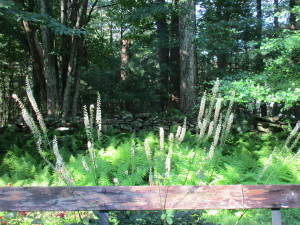
- Black-eyed susans
- Blanket flowers
- Bleeding Heart
- Buddleia –
- Butterfly weed (Asclepias tuberosa) –
- Cardinal flowers, red and purple.
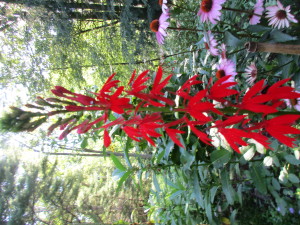
- Catmint
- Cleome A – self seeding
- Clovers
- Columbine
- Coreopsis
- Cosmos A
- Daisies
- Dame’s rocket
- Dandelions
- Day lilies
- Delphiniem
- Dill A
- Echinacea purpea (cone flower)
- Fennel
- Feverfew

- Foxglove
- Gloriosa daisy
- Goldenrods
- Grasses and sedges
- Heliotrope A
- Hibiscus
- Hollyhock
- Irises, bearded
- Jewelweed
- Ironweed
- Joe Pye Weed.
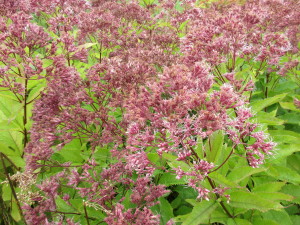
- Liatrus , spicata and gay feather
- Lantana A
- Lavendar
- Ligularia
- Lilac
- Lupines
- Mallows
- Meadow Rue
- Monarda, bee balm,
- Marigolds
- Mountain Mint
- Nasturtium A

- Oregano

- parsley
- Pearly everlasting
- Penstamon
- Petunias A
- Phlox
- Plantain
- Queen Anne’s lace
- Rudbeckia
- Russian Sage
- Sedum
- sweet William
- Sunflowers some A
- Thistles
- Turtle Head
- Verbena A
- Violets
- Wild blue indigo
- Yarrow
- Zinnias A
- BUSHES: Elderberry, Holly, Lilac, New Jersey Tea, Serviceberry (also tree variety), Spicebush, Sumac, Summer Sweet, and Viburnum
- TREES: Aspen, Birch, Cherry, Cottonwood, Dogwood, Hackberry, Hawthorn, Hickory, Hop,Hornbeam, Oak, Poplar, Redbud, Sassafras, Walnut, White pine, Willow
- VINES: Dutchman’s pipe, Honeysuckle, Trumpet vine:
- Dutchman’s Pipe grows in the corner of our garage attracting the Pipevine Swallowtail caterpillars

 Monarch Watch has started a gardening program called Monarch Waystations.
Monarch Watch has started a gardening program called Monarch Waystations.
You can officially certify your garden as a Monarch Waystation by planting different types of milkweed on which monarchs can lay their eggs, and various nectar rich plants, as well as offering shelter from storms. Please find out more information by visiting www.monarchwatch.org.
The National Wildlife Federation also will certify your site as a Backyard Wildlife Habitat if you agree to use native plants and not use pesticides and herbicides. They have guidelines for your garden at www.nwf.org.
www.pollinatorpartnership.org.
Puddling is something that most butterflies need to soak up minerals from damp earth.
Here is a white admiral taking advantage of moist earth:

Great spangled fritillary feasting on a marigold
Maraleen’s Butterfly Garden Tour, Summer 2006 Please visit videos of Part I and Part II of Maraleen’s garden tour



